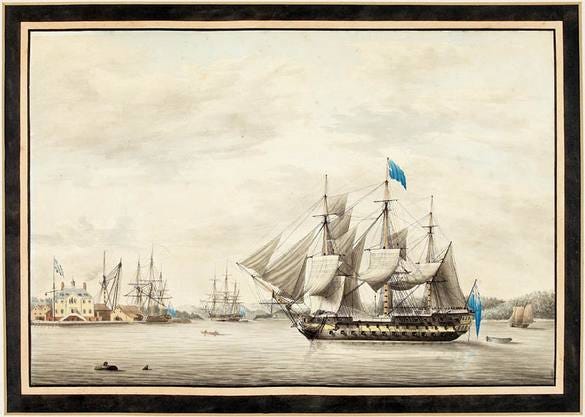On this day in 1777, Americans evacuate Fort Mifflin. These brave soldiers had held out against the British for several weeks, giving George Washington just what he needed: time to get to Valley Forge.
British General Sir William Howe had captured Philadelphia mere weeks earlier. It was a victory that left him with a huge problem on his hands: How would he get supplies to the city? He needed to wrest control of the Delaware River from the Americans, which meant driving them from Forts Mifflin and Mercer. One such attempt was made in late October, but Americans rebuffed the attack.
Naturally, the British weren’t going to give up that easily. They built up batteries near Fort Mifflin and moved more ships closer to the fort. Finally, a large-scale bombardment began on November 10.
Washington had ordered the men at Fort Mifflin to hold out for as long as possible. He needed more time to get away from Howe and to get his army into winter quarters at Valley Forge. The distraction at Fort Mifflin was buying him time. Thus, every night, Americans would work to rebuild their defenses after the day’s bombing. They knew they had to hold out for as long as humanly possible.
On November 12, Washington gave new orders. The fort’s commander had discretion to abandon it when he could hold out no longer. Washington added that “Cannon and Stores ought immediately to be removed” and the last to leave “should set fire to the Barracks and all remaining Buildings.”
The men at the “brave little Garrison” had basically been given permission to leave. But do you know what they did? They stayed anyway. By November 15, the British had surrounded the fort with several ships carrying more than 200 cannons. Reportedly, the British fired 1,000 cannonballs at the fort in just one hour. At least one British ship got so close that its sailors could lob hand grenades into the fort.
All of this power aimed against 400 men and 10 cannon in Fort Mifflin! Despite the overwhelming assault, Americans held out all day before finally facing the need to evacuate.
As they left on the evening of the 15th, the fort’s defenders worked to complicate matters for the British. Forty men stayed behind and set fire to the fort. Reportedly, even as the fort was engulfed in flames, the Americans’ flag still flew high above.
It was another loss that added up to a more important victory: Washington and his army had been given critical time to get to Valley Forge.
Sources can always be found on my website, here.





Washington was a brilliant leader. He ordered his men to remove weapons, supplies, burn the barracks and buildings leaving nothing behind for the enemy to use. We could sure use men with that wisdom today. Instead we’ve been stuck with leaders who make foolish decisions and hurt our country. Who would think it was smart to leave our weapons, supplies, information, buildings and both Americans and allies in a hostile environment? We know the answer. Excellent history lesson, Tara. Going to read the first part again.
Thank you Tara. Fort Mifflin was strategic to the British, and the brave American forces held onto it until Washington was safely away, and into winter encampment.
I don't think that I have heard this story before but, it gives life to some of the strategy used to eventually win the war and gain our freedom and independence.